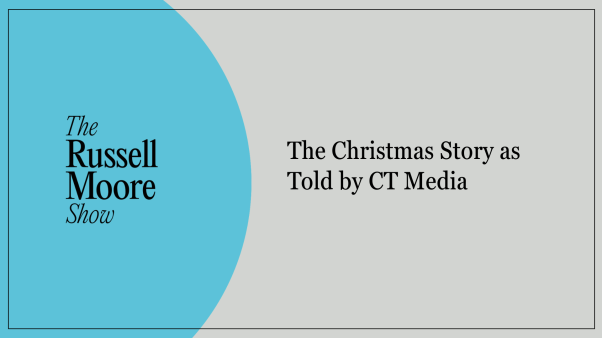If the Bible is the most-published book in world history, books about the Bible sometimes feel like a close second. That’s not a bad thing. I’ve written a couple of them myself and may have more in me. Books about the Bible are vital because they point us back to the sacred text, showing us how to read it, what it’s about, or (perhaps) how we’ve gone wrong in understanding it. For this reason, ever more Bible books are far from redundant; I’d go so far as to say they’re necessary.
As the closing verse of John’s gospel says, “There are also many other things which Jesus did; were every one of them to be written, I suppose that the world itself could not contain the books that would be written” (21:25, RSV throughout). In a sense, books about the Bible are just these books that burst the world’s limits: Christians will keep on writing and reading them until the Lord’s return. Why? Because books about the Bible are always interpretations of the Bible. And in the words of Protestant theologian Gerhard Ebeling, “Church history is the history of the exposition of Scripture.”
Into the church’s ever-expanding library of Bible books, Jonathan Linebaugh has contributed another: The Well That Washes What It Shows: An Invitation to Holy Scripture. Linebaugh is a professor at Beeson Divinity School in Birmingham, and his scholarship has focused both on the New Testament, especially Paul’s letters, and on Reformation approaches to law, grace, and Scripture.
But this book is not a scholarly monograph. It’s a slim, accessible volume written for laypeople as well as pastors. As Linebaugh explains, it’s “an introduction to Holy Scripture that hopes to be an invitation to Holy Scripture.” The book simultaneously explains what the Bible is and narrates the story the Bible tells.
The tone isn’t dispassionate or professorial. Linebaugh is a preacher, and his model is Martin Luther: “Whatever page or portion of Scripture Luther is preaching from, he is preaching and pointing to Jesus Christ.” That’s because “all of Holy Scripture … both speaks about Jesus and is Jesus speaking.”
Here’s how that works: When Jesus speaks, he gives himself. So when we hear the voice of Jesus in the human words of the Bible, we are right to confess that what we have heard is the Word of God. For Jesus is both God and God’s Word: “In the beginning was the Word, and the Word was with God, and the Word was God” (John 1:1). Prophets and apostles are a vehicle for this one eternal Word.
But even if we acknowledge God’s speech in Scripture, Linebaugh wants us to realize that when we encounter the Bible’s words about Jesus, we are encountering Jesus himself. The Word of the gospel, which Scripture proclaims and to which it testifies, is one and the same Word that brings the living presence of the risen Lord into our midst—into our lives—into our very hearts and minds and bodies. Like Jacob in his wrestling match at the Jabbok river (Gen 32:22–32), we will never walk away from this encounter unchanged.
Besides Luther, Linebaugh’s other inspiration is George Herbert, whose 1633 poem “The Holy Scriptures I” provides the title and driving metaphor of the book. The Bible, Herbert says, is a well that washes what it shows. This two-step operation is sometimes called the two “words” or “works” of God. Through Scripture, God first diagnoses, then heals; first indicts, then pardons; first convicts, then forgives; first binds, then sets free. We cannot be helped if we don’t know our own need—but knowing our need isn’t good enough. We need help beyond ourselves to relieve our pitiful condition.
This is just what the Word of God does. It shows us what we are: miserable sinners bound for death, hopeless and godless and assaulted on every side by dangers visible and invisible. We are anxious, lonely, guilty, and hurting. We are unwell. To say otherwise would be dishonest. This is Scripture’s honesty, a term Linebaugh treasures as a description of God’s work in his Word. It tells us the truth about ourselves, and the truth isn’t pretty.
And yet the Bible goes on to wash what it shows. It washes us sinners clean. In Paul’s words, “Christ loved the church and gave himself up for her, that he might sanctify her, having cleansed her by the washing of water with the word, that he might present the church to himself in splendor, without spot or wrinkle or any such thing, that she might be holy and without blemish” (Eph. 5:25–27). Or as Luther puts the point, “The love of God does not find, but creates, that which is pleasing to it.” God’s love finds us through his Word, and the result is total transformation—from tip to toe.
Such is the flavor of Linebaugh’s writing about Scripture. It is earnest, endearing, unpretentious, and attractive. I can think of more than a few college students in my life who need a taste of it, not least to rinse out the dry and bitter flavor of so much other writing about the Bible.
The book as a whole is simply organized. Following a concise theological introduction (a highlight in itself), Linebaugh introduces the Old Testament in three chapters (Law, Prophets, Psalms) and the New Testament in three as well (Gospels, Paul, Hebrews to Revelation). He then uses Romans as a case study before concluding with a chapter on the ministry of the Word as a comfort to the lost and despairing.
These chapters are a pleasure to read, although seasoned pastors and biblical scholars are unlikely to learn new information from them. The book’s ideal setting and audience is the classroom, I think, whether high school, college, Sunday school, or adult small group.
One of the book’s greatest strengths is its foursquare refusal to dabble in hot-button issues, whether moral, political, or theological. This is not a book about our petty squabbles or partisan divisions. It’s about the book of the gospel, the Holy Scriptures that give us Christ. Our disagreements are important, but they are not the main thing. The main thing is the Lord. Too often our conflicts point us away from the empty tomb in order to clinch a debate. If we have forgotten the Good News, then even when we win, we lose.
Before I raise a critical question or two about Linebaugh’s work, I want to comment on his style. At times his exposition of Scripture is so close to the text’s surface as to be invisible. I trust that this is on purpose. Linebaugh does not avoid repetition but positively revels in it. He never paraphrases or summarizes when he can quote verbatim instead. He rarely turns to illustrations from the world or his own life; his words are, for the most part, tissue thin to the point of transparency. He wants the Word to resound in his words; he wants his words to point, like the finger of John the Baptist, not to himself but to Christ alone.
Given Linebaugh’s readership, this is a wise if delicate decision. It seems he is seeking to train his readers to become readers of Scripture. And the way he does this is by suffusing his own text as much as possible with the text of Scripture. Once you turn the final page, you’ve been conditioned to turn next to the genuine article: Scripture itself.
I call this decision a delicate one because the danger is that readers who do not know Scripture, much less how to read it, will find writing like Linebaugh’s difficult to navigate precisely because so much of it is scriptural quotation. I don’t mean to call the decision into question, only to flag it as a challenge facing us all: How do we write for a postliterate audience largely ignorant of Scripture’s sound and feel on the page? Should we ease them into it or throw them in the deep end? Either way demands a light touch. Linebaugh has one, and I’m confident many beginners will be grateful for it.
Having said that, there was one matter of style that stumped me. In the preface to his 1988 book Disappointment with God, Philip Yancey explains why he chose not to put biblical references “in footnotes or parentheses within the text”—namely, because doing so “creates an awkwardness in reading not unlike listening to someone with a stutter.”
I wish Linebaugh had followed Yancey’s method. There are long sentences and entire paragraphs so filled with parentheses, abbreviations, numbers, colons, and semicolons that my eyes struggled to follow the thread. And this is my day job! I read books like this for a living. I can’t imagine the unnecessary strain for a typical reader, especially one who is new to Scripture. I grant that Linebaugh is following guild standards, but that’s only to shift the problem one level up. All Christian writers for a nonscholarly audience—including publishers and editors, including this very article—need to hash out new standards that think first about readers’ needs and less about precision in citation.
This comment returns us to the implied audience, which is a confusion I faced throughout Linebaugh’s book. On every page it is clear that the book’s audience is laypeople of all ages. Yet the final chapter (nearly 20 pages) is about ministry and appears to be addressed to pastors. This is an odd decision in more than one respect.
First, very little in this book will be news to any pastor I know. Not that pastors couldn’t benefit from it—sometimes the most informed need to be reminded of the basics—but so much of what Linebaugh is doing is milk for beginners, not meat for the mature. So the turn to pastors in the end was befuddling, even jarring.
Second, in Linebaugh’s treatment of Scripture the church is nowhere to be found. For that matter, equally absent are tradition, liturgy, the sacraments, and the Holy Spirit. The result, if I may put it this way, is an account of the Bible and its message that is maximally and perhaps stereotypically Protestant. By this I don’t mean the book is “not Catholic.” I mean that it is so intensely focused on the “solas”—Christ alone, grace alone, faith alone, Scripture alone—that it leaves by the wayside other essential features of the gospel.
For example, in a book about the Bible we get no more than a couple pages on Acts, and even these consist mostly of references to Paul’s ministry and the geographic spread of God’s Word. I was astonished to see Linebaugh summarize both the event of Pentecost and the second chapter of Ephesians without mention of the church, either directly or indirectly. The power of the Word in Linebaugh’s presentation is so Christ-centered that an unsuspecting reader wouldn’t guess the Spirit is crucial to hearing and being changed by it.
Above all, one walks away without any sense that the book of Scripture—which is absolutely the book of Christ, the Word of the gospel, the inspired medium of the Lord’s living address—is also the church’s book, or that this book’s home and habitat is the church’s public worship. Linebaugh has an enviably light touch with historical details, like the exile from Babylon or the cities Paul visited, but he does not mention the history of the texts themselves: authored by leaders and servants of God’s people, edited by them, collected by them, copied by them, preserved by them, translated by them, canonized by them, and much more besides.
These aren’t mere matters of history; they’re theologically significant. The same Spirit who inspired and speaks through these texts superintended every moment in the entire canonical process, from their initial transcription, down through the centuries, all the way to hearing Joshua or Jeremiah from the pulpit last Sunday in one’s mother tongue. And the hands the Spirit used were the hands of the people of God.
In short: no Scripture, no church. But also: no church, no Scripture.
This dynamic is not incidental to the story Scripture tells. That story is indeed universal in scope and minute in impact—cosmic in extent while reaching down to me. But it also has a particular protagonist: the family of Abraham, the elect people of God, whom Christ has opened to the nations. Linebaugh doesn’t avoid talk of Israel. But reading him, you wouldn’t know that the church is Christ’s “body, the fulness of him who fills all in all” (Eph. 1:23) or, in the words of the Shepherd of Hermas, that “for her sake the world was framed.”
The resulting impression is that Scripture’s primary business is to facilitate a one-on-one relationship between individual readers and Jesus. Not for a second do I think Linebaugh believes this or intended to communicate it. But that is what comes across. This unintended effect is part of what makes the final chapter so odd. In place of a chapter on ministry, the book needed a chapter on the church: its traditions of reading (not only Augustine and Luther but also all the fathers and medievals between them, not one of whom Linebaugh cites or references), its sacramental worship, and most of all its life with the Holy Spirit.
Linebaugh is right to say that, through Scripture, “God unveils our need for Jesus; God gives us Jesus.” But this giving is not generic or random; the “us” who receive it are a body, not just individuals. We are not only children of the Father but also together the bride of the Son. In the words of Dei Verbum, through Scripture “God, who spoke of old, uninterruptedly converses with the bride of His beloved Son; and the Holy Spirit, through whom the living voice of the Gospel resounds in the Church, and through her, in the world, leads unto all truth those who believe and makes the word of Christ dwell abundantly in them.”
The Bible is about Jesus—but not Jesus without his bride. Such a story would feature the lover without the beloved, the Lord without his people, the head without the body.
Jonathan Edwards wrote that God created the world in order “to provide a spouse for his Son Jesus Christ, [who] might enjoy him and on whom he might pour forth his love.” We must therefore always center our telling of the gospel on Christ, and Linebaugh does this beautifully. Having zoomed in on the face of the Lord, however, he has cropped the Lord’s body out of the picture. The Bible doesn’t do that, and neither should books about the Bible.
Brad East is an associate professor of theology at Abilene Christian University. He is the author of four books, including The Church: A Guide to the People of God and Letters to a Future Saint.



























